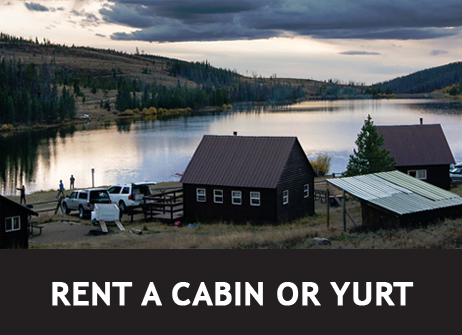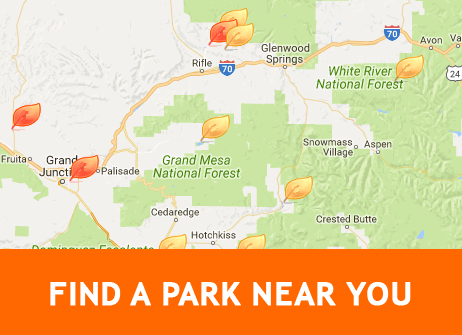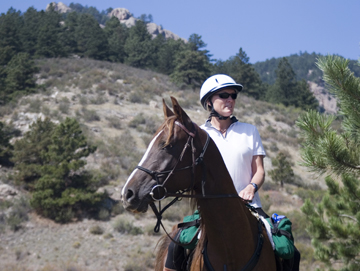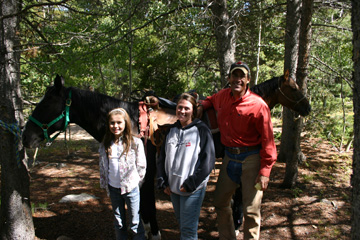More Outdoor Recreation Information



Horseback Riding at State Parks
Many Colorado State Parks provide the perfect scenery for a spring, summer or fall horseback riding adventure. Choose the perfect landscape for your ride—from the miles of scenic trails against the mountain backdrop at
Mueller State Park to the trail surrounding the peaceful waters of
Barr Lake State Park.
State Forest State Park and
Golden Gate Canyon State Park offer public corrals for those camping with horses. Mueller State Park offers equestrian campsites designed for rider and horse convenience. If you don't own a horse, the stables at
Chatfield State Park and Cherry Creek State Park offer horse rentals for your riding pleasure.
 More Trail Riding Options...
More Trail Riding Options...
Equestrians who are interested in visiting
Navajo State Park,
Steamboat Lake State Park and
Trinidad Lake State Park, please contact the park directly for more information.
Sharing Trails Safely With Horses
 Trails are one of our Colorado State Parks' most valuable assets. A positive trail experience requires cooperation, understanding and courtesy by all trail users. In general, all users should yield to horseback riders and bicyclists should yield to all users.
Trails are one of our Colorado State Parks' most valuable assets. A positive trail experience requires cooperation, understanding and courtesy by all trail users. In general, all users should yield to horseback riders and bicyclists should yield to all users.
If you encounter a horse on a state park trail, be sure to make yourself visible and keep calm--sudden movements can startle a horse. Allow the animal to be on the uphill side of you and the trail, where it may feel safer. Something unfamiliar from above a horse may trigger fear of a predator. Be alert from instructions from the equestrian and speak to the horse in a normal tone, which identifies you as a human.
Tips for Trail Users
Hikers: When approaching a horse, do so from the front. When passing the horse from behind, call out to the rider and horse to let them you know you are going to pass. Allow as much room as possible when passing a horse to avoid being kicked or spooking the animal. Proceed slowly and steadily while passing, and talk to the horse to help it relax. If an equestrian gives you the right or way, wait until you receive a signal that it is safe to pass.
- OHV Riders:
Pull to the side of the trail far enough for horses to pass safely as soon as you see them.
Pull to the downhill side of the trail if possible since horses tend to perceive unknown threats on the uphill side as predators.
Shut off your motor as soon as possible and remove your helmet. The horse will be more likely to recognize you as a human.
Speak to the rider and horse in a friendly, relaxed tone.
When approaching horses from behind, stop, call ahead and make yourself known to the rider. Ask them if it is OK to pass and the best way to do so.
Bicyclists: Because bikes are swift and low to the ground, they often resemble a horse's natural predator. This means that bikes can trigger a flight response the may occur, despite years of training. Bicyclists should always yield to horses and foot traffic. When you encounter a horse, do not let your brakes skid; pass slowly and only after a rider has given you the OK.

